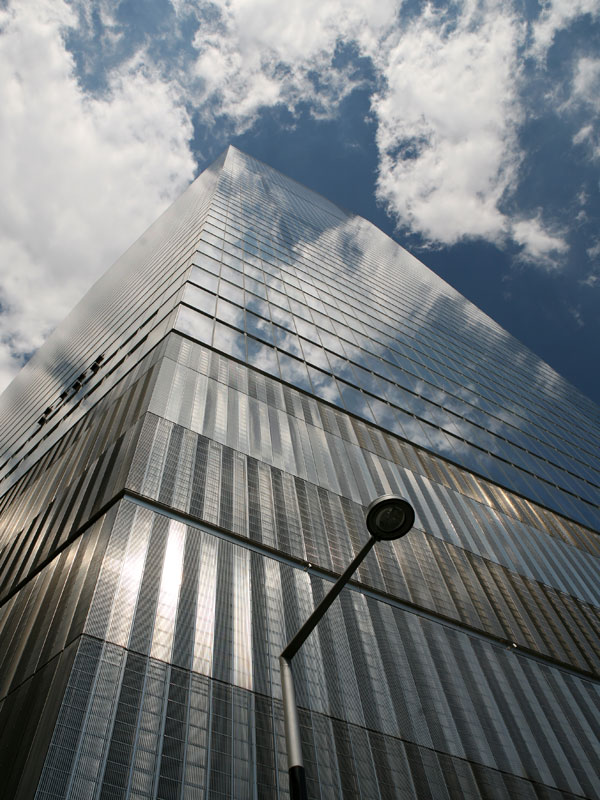For my inspiration presentation I studied the work of glass sculptor James Carpenter. What drew me to his work is his experimentation on using glass as a medium to perceive the environment in new and different ways. He seems to be more interested in the effects that he is creating on the material instead of thinking of glass as a transparency. With a successful body of work, I only chose 4 that I thought could apply to my project, or simply because I just found them interesting.
Periscope Window – Dayton Residence – Minneapolis Minnesota 1995-1997
An installation in a house to provide privacy and views to the outside using several layers of glass, reflective surfaces and periscopic mirrors. Different effects happen through different times of the day and you are able to see the sky and tree outside in new ways.
image source: http://mw2mw.com/periscope-window
Dichroic Light Field – Millennium Tower – New York – 1994-1995
Installed on the east side of the Millennium Tower to break up the facade, create depth and allow for a more pedestrian scaled environment. Glass tabs were mounted onto a reflective glass surface that change as the sun moves throughout the day, casting shadows from nearby buildings and giving the street a dynamic theatrical effect.
image source: http://www.aiany.org/eOCULUS/2009/2009-05-12.html
7 World Trade Center
Carpenter was commissioned as a consultant for the exterior skin, podium and lobby installation. The exterior skin is mirrored glass and spandrel units with depth creating an illusion that the parallelogram tower disappears into the sky. The podium, which houses large transformers, is 80′ high and allows for air ventilation. To break it down to pedestrian scale, Carpenter and team used a series of metal panels and triangular wires to diffuse and scatter light. At night, the podium glows blue and using a camera tracks the movement of pedestrians, projecting it onto the 80′ high podium. The lobby is a series of large luminescent panels with quotations scrolling through the inside and can be viewed from the outside.
image source: http://wirednewyork.com/wtc/7wtc/
image source: http://www.jets.org/_delete/1106/extreme_engineer.htm
image source: http://www.greenbuildingsnyc.com/2009/07/08/leasing-activity-continues-at-leed-gold-certified-7-world-trade-center/
Fulton Transit Shelter – New York – 2004
The glass atrium – whose form mimics the rotation of the earth is designed to reflect light into the dark tunnels below. The oculus allows the users to follow the path of the sun throughout the day.
image source: http://www.downtownexpress.com/de_55/fultonsubwaydesign.html







